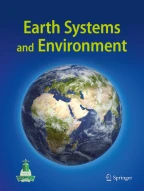Abstract
In this research, the Sun-induced Chlorophyll Fluorescence (SIF) signal was derived from field-based spectrometers and Hyperion satellite imagery of Hong Kong’s Country Parks by applying the Fraunhofer Line Difference (FLD) method. Due to high levels of atmospheric aerosols and water vapour in the study area, a modified FLD method (FLD-M) was tested for its ability to deliver improved SIF estimates by cancelling out the effects of atmospheric scattering. The SIF results were compared with the Normalised Difference Vegetation Index (NDVI), and analysed according to seasonality, five successional age groups of forest and monoculture exotic plantations. Results indicate that SIF methods are more sensitive to seasonal phenology and diurnal fluctuations than the NDVI, indicating its greater sensitivity to photosynthetic activity. The SIF responds earlier and stronger, to senescence in winter and green-up in summer. Field spectrometer data showed NDVI to be unresponsive to time of day, whereas fluorescence responds to changes in sunlight intensity from 10:15 a.m. to 02:00 p.m. Both seasonal and diurnal results indicate that SIF is better than NDVI in representing the subtle changes in vegetation conditions. Although both NDVI and SIF distinguish between the four woody structural stages of vegetation, only SIF can distinguish between forest and exotic plantations, the difference being greater in the dry season. The study provides an improved operational remote sensing methodology for investigating the health status of tropical secondary forest, where atmospheric turbidity is high.
Similar content being viewed by others
Availability of Data and Material
The data could be available on request.
References
Abbas S, Nichol JE, Zhang J, Fischer GA (2019) The accumulation of species and recovery of species composition along a 70 year succession in a tropical secondary forest. Ecol Indic. https://doi.org/10.1016/j.ecolind.2019.105524
Brantley ST, Zinnert JC, Young DR (2011) Application of hyperspectral vegetation indices to detect variations in high leaf area index temperate shrub thicket canopies. Remote Sens Environ 115(2):514–523. https://doi.org/10.1016/j.rse.2010.09.020
Colombo R, Celesti M, Bianchi R, Campbell PKE, Cogliati S, Cook BD et al (2018) Variability of sun-induced chlorophyll fluorescence according to stand age-related processes in a managed loblolly pine forest. Glob Change Biol 24(7):2980–2996. https://doi.org/10.1111/gcb.14097
Damm A, Erler A, Hillen W, Meroni M, Schaepman ME, Verhoef W, Rascher U (2011) Modeling the impact of spectral sensor configurations on the FLD retrieval accuracy of sun-induced chlorophyll fluorescence. Remote Sens Environ 115(8):1882–1892. https://doi.org/10.1016/j.rse.2011.03.011
Frankenberg C, O’Dell C, Guanter L, McDuffie J (2012) Remote sensing of near-infrared chlorophyll fluorescence from space in scattering atmospheres: implications for its retrieval and interferences with atmospheric CO2 retrievals. Atmos Meas Tech 5(8):2081–2094. https://doi.org/10.5194/amt-5-2081-2012
Giardina F, Konings AG, Kennedy D, Alemohammad SH, Oliveira RS, Uriarte M, Gentine P (2018) Tall Amazonian forests are less sensitive to precipitation variability. Nat Geosci 11(6):405–409. https://doi.org/10.1038/s41561-018-0133-5
Kruse FA, Boardman JW, Huntington JF (2003) Comparison of airborne hyperspectral data and EO-1 hyperion for mineral mapping. IEEE Trans Geosci Remote Sens 41(6):1388–1400. https://doi.org/10.1109/TGRS.2003.812908
Liu L, Liu X, Hu J (2015) Effects of spectral resolution and SNR on the vegetation solar-induced fluorescence retrieval using FLD-based methods at canopy level. Eur J Remote Sens 48(1):743–762. https://doi.org/10.5721/EuJRS20154841
Ma J, Xiao X, Zhang Y, Doughty R, Chen B, Zhao B (2018) Spatial-temporal consistency between gross primary productivity and solar-induced chlorophyll fluorescence of vegetation in China during 2007–2014. Sci Total Environ 639:1241–1253. https://doi.org/10.1016/j.scitotenv.2018.05.245
Meroni M, Rossini M, Guanter L, Alonso L, Rascher U, Colombo R, Moreno J (2009) Remote sensing of solar-induced chlorophyll fluorescence: review of methods and applications. Remote Sens Environ 113(10):2037–2051. https://doi.org/10.1016/j.rse.2009.05.003
Merrick T, Pau S, Jorge SP, Silva SF (2019) Spatiotemporal patterns and phenology of tropical vegetation solar-induced chlorophyll fluorescence across Brazilian biomes using satellite observations. Remote Sens 11(15):1746. https://doi.org/10.3390/rs11151746
Mohammed GH, Colombo R, Middleton EM, Rascher U, van der Tol C, Nedbal L et al (2019) Remote sensing of solar-induced chlorophyll fluorescence (SIF) in vegetation: 50 years of progress. Remote Sens Enviro 231:111177. https://doi.org/10.1016/j.rse.2019.04.030
Nazeer M, Nichol JE, Yung Y-K (2014) Evaluation of atmospheric correction models and Landsat surface reflectance product in an urban coastal environment. Int J Remote Sens 35(16):6271–6291. https://doi.org/10.1080/01431161.2014.951742
Ni Z, Lu Q, Huo H, Zhang H (2019) Estimation of chlorophyll fluorescence at different scales: a review. Sensors 19(13):3000. https://doi.org/10.3390/s19133000
Plascyk JA (1975) The MK II Fraunhofer Line Discriminator (FLD-II) for airborne and orbital remote sensing of solar-stimulated luminescence. Opt Eng 14(4):339. https://doi.org/10.1117/12.7971842
Raychaudhuri B (2014) Solar-induced fluorescence of terrestrial chlorophyll derived from the O2-A band of Hyperion hyperspectral images. Remote Sens Lett 5(11):941–950. https://doi.org/10.1080/2150704X.2014.976884
Zhang M, Li G, Wang S, Fu Z, Guan Y, Lin L (2017) The influence of different integration time on stoichiometric analysis in near infrared grating spectrometers. Infrared Phys Technol 86:130–134. https://doi.org/10.1016/j.infrared.2017.08.018
Acknowledgements
Authors acknowledge the Hong Kong Research Grants Council Project B-Q49D and The Hong Kong Polytechnic University Projects 1-ZVN6 and 1-ZVE8.
Funding
The research was supported by the Hong Kong Research Grants Council Project B-Q49D and The Hong Kong Polytechnic University Projects 1-ZVN6 and 1-ZVE8.
Author information
Authors and Affiliations
Corresponding authors
Ethics declarations
Conflict of interest
There declares that there are not any conflicts of interest.
Rights and permissions
About this article
Cite this article
Irteza, S.M., Nichol, J.E., Shi, W. et al. NDVI and Fluorescence Indicators of Seasonal and Structural Changes in a Tropical Forest Succession. Earth Syst Environ 5, 127–133 (2021). https://doi.org/10.1007/s41748-020-00175-5
Received:
Accepted:
Published:
Issue Date:
DOI: https://doi.org/10.1007/s41748-020-00175-5
